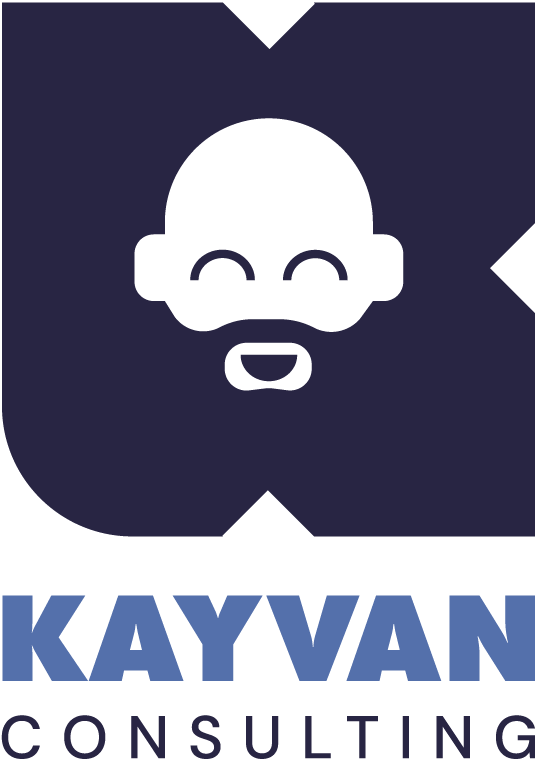So… You’ve identified the need to collectively solve some problems and make some decisions.
Now you’ve decided that some sort of strategy workshop, strategy meeting, or strategy session is the way to get this done.
Well done! You’d be surprised at how many people fail at this first step. Now you’re probably wondering how to run a strategy workshop effectively…
Let me help you put the pieces together.
As an expert business strategist and collaboration coach, I have facilitated numerous strategy workshops that resulted in practical and actionable plans. I can tell you that running a successful strategy workshop isn’t that difficult… Provided you carefully plan things beforehand.
In this article, I will give you all the answers; a blueprint of how to run a strategy workshop that delivers results.
Table of contents:
- What is a strategy workshop?
- Establish the objective and goals of the strategy workshop
- Who should attend a strategy meeting?
- How do you write an agenda for a strategy meeting?
- How to prepare for a Strategy Workshop?
- How to run a strategy workshop in person
- How to run a strategy workshop remotely
- What to do after the workshop

What is a Strategy Workshop?
Put simply – a strategy workshop is a meeting or session in which a group of people spends a dedicated, focused period of time working on strategy.
This could be to work on a new strategy, review existing plans in place, track the progress of the current strategy, or even ideate and brainstorm new concepts. Fundamentally, plans are being made, problems are being solved and decisions made.
The subject matter or purpose of the strategy session can be broad or specific – anything from an overarching business strategy down to the specifics of a marketing campaign.
Establish the objective and goals of the strategy workshop
The first step in running any kind of strategy meeting is to determine its objective and goals.
All too often a strategy meeting will fall apart because the overarching intent of the workshop has not been correctly set and communicated. If your objective is too broad or unclear, the group will likely go in different directions during the workshop because they have interpreted the intent of the session differently. You will need to the objective and goals of the strategy workshop before the session begins.
To correctly establish the objective and goals, ask yourself these questions:
- Why do we need a strategy session?
- What are we trying to achieve?
- What outcomes do we want?
- What decisions do we need to make?
- What problem(s) are we trying to solve?
Coming up with a single, clear statement that communicates the objective is what you should be aiming for here.
Once you have this decided, you can come up with several more specific and tangible goals or outcomes you would like to decide on during the strategy session. Ideally, these should be:
- Action items clearly defined as tasks, projects, or initiatives
- Clarity on who is responsible for taking these forward
- Deadlines or due dates for each one
- A definition of how you will measure the success of each one

Who should attend a strategy meeting?
The success of your strategy workshop heavily depends on selecting the right participants.
Are they well-placed to contribute to the subject matter being discussed?
Different participants for different kinds of strategy workshops
If your strategy meeting is intended to tackle broad, high-level decisions around the strategic future of the business, then it would make sense for the most senior members of the company to attend. C-suite representatives, directors, and heads of department may all want to be in attendance.
If your meeting will dig into technical information, data, or product/service specifics then it would be wise to have someone in the room to help who is a subject matter expert on these things and can help boil down and disseminate detailed information for the other participants.
If your strategy workshop is focused on a specific team, initiative, or department, then you will need to choose the most relevant participants for that too. Invite people that cover all the bases required to ensure you have the best and most relevant knowledge and expertise in the room.

The importance of diversity and different perspectives
In all scenarios, it is highly beneficial to involve people who will bring a wide range of perspectives and opinions. If everyone you are inviting to a strategy session looks, thinks, and acts the same way, or is of a similar level of seniority, then perhaps you would benefit from mixing things up a little and creating some more diversity in thought.
I have facilitated workshops where we’ve even included a number of ‘wildcard’ participants who would not normally be considered for such a meeting, whose slightly left-field opinions and observations have proven to be critical in bringing fresh and different perspectives to the table.
I am also a huge proponent of involving more of your team in strategy sessions.
Keep the number of participants under control
Another point to make here is that it will be important to limit the number of participants.
As the old adage goes, too many cooks spoil the broth. Bringing too many people into a strategy meeting can cause problems. I would advise getting no more than 9 people in the room at once for a strategy session.
That said, be sure to include any major decision-makers in the meeting.
The last thing you want is to have a successful session, only for the outcome to be vetoed by an important person that should have been present.
How do you write an agenda for a strategy meeting?
Once you’ve got your objectives and participants decided, it’s time to write a comprehensive agenda.
This is the single most important action and piece of preparation you will carry out. Without an agenda, the workshop will have no structure and is almost certain to go off the rails. Getting your agenda right will give the strategy session direction, pace, and purpose.
Every agenda will be unique and will depend on the objectives, participants, and outcomes you’re looking to achieve.
But having a framework to follow will give you a massive head start.
- Introductions
- Perhaps everyone in your workshop will already be familiar with each other, but there’s no harm at all in quickly running around the room and doing introductions. Name, role, and something fun here to break the ice is a nice way to warm everyone up.
- State the purpose of the workshop
- Everyone should have a good idea of what you are all coming together to work on. But reading out the objective you’ve carefully crafted and making it visible to everyone is important here. I like to have the strategic objective visible at all times in a strategy session.
- This is also a good time to clarify exactly what outcomes you are looking to finish the session with.
- Communicate the agenda
- This structured plan for the session can quickly be outlined. Don’t go into too much detail here, just give the bullet points.
- List out the exercises you’ll use
- The core of every good strategy workshop will consist of a number of pre-planned exercises to take the group through each stage. Do your research and find a sequence of suitable exercises that will neatly take the group through each phase of the workshop. Every exercise should have an outcome or decision made before moving on to the next one.
- Summarize
- You’ll want to finish the session by summarizing the decisions made, outcomes decided on, and the next steps.
- Timings
- In addition to the loose structure outlined above, make sure you know how long each item in your agenda should take. You’ll be responsible for keeping everyone on track during the session! Overrunning in any one part of the workshop can result in another section being rushed, skipped or even finishing the session without an outcome.
- Plan for breaks
- Participants in a strategy meeting will have a finite about of energy and attention. Some parts of the workshop will be more intense, some will require focus, some will require energy. Ensure you structure the session with adequate breaks to ensure everyone is fed, watered, has time to use the restroom, and check any messages as needed.
- Pro-tip: where possible, use breaks to get participants moving, with fresh air and sunlight. Going for a quick walk can do wonders for resetting everyone’s focus and energy levels, not to mention giving you all a little perspective from the exercises and the focus of the meeting.

How to prepare for a Strategy Workshop?
Once you have your all-conquering agenda in place, you’ll need to get everything else ready for the strategy session.
Be sure to prepare any relevant reports, data, or reading materials well in advance and even distribute these to participants well ahead of the meeting. Some of these may even need to be supplied to the group by one or more of the participants. Ensure you give ample time for everyone to share and read.
Choose your meeting venue carefully! Ideally, you’ll pick a space with:
- Good natural light
- Space to move around
- Tables and chairs that can be moved & rearranged
- Whiteboard(s) and plenty of flat surfaces for stickies and paper to be attached
- A TV/projector
- Access to drinks & snacks
Finally, you’ll need to prepare and bring all the materials needed on the day to run the exercises you’ve planned. This could include:
- Printed agendas
- Printed reports/data
- Pens & pads
- Sticky notes
- Flipcharts
- Large pads to stick to the wall
- Tape (which won’t mark walls!)
- Any adapters & cables for the TV/projector
- Any other props needed for each exercise!
How to Run a Strategy Workshop in Person
I would highly recommend considering listing the help of an external, independent facilitator for your strategy workshop.
If this isn’t possible, then assign this responsibility to someone on the team. They will be the person tasked with keeping everyone on track, on time, following the agenda, and completing each of the steps in the pre-planned order. The facilitator should also ensure that all the outputs of the session (ideas, decisions, tasks, timings, etc) are clearly visualized and documented.
The facilitator should use the pre-planned exercises to guide the group through each step of the agenda.
Finally, the facilitator needs to conclude the session with a summary and communicate all the outcomes, action items, and next steps.
How to Run a Strategy Workshop Remotely
Running a workshop remotely or in a hybrid environment can be tricky, but is totally possible.
The exact same process should be followed as above for an in-person meeting. You’ll need to ensure that everyone in the workshop can see, hear and contribute to the exercises. To do this effectively you’ll need a white-boarding tool and video conferencing capabilities.
My go-to tool for running remote strategy meetings of any kind is Miro. Others use Mural or Microsoft Whiteboard, but I have found Miro to be the best fit for everything required in running a strategy workshop remotely.
Remember to do whatever you can to preserve the quality of interaction you would expect at an in-person workshop or meeting. Allow adequate time for everyone to speak and include everyone in the exercises.
What to do after the workshop
- Communicate outcomes to all participants & stakeholders.
- Reiterate tasks, assignments, and deadlines.
- Schedule follow-ups to check in on progress,
- Use the metrics decided on in the session to determine the ongoing success of the strategy.
- KPIs can roll into OKRs or whatever progress-tracking methodology your team uses.
- Don’t be afraid to revisit the plan. Things change, and new obstacles and factors come into play. You can always reassess and make amendments to your original plan.
- Celebrate success! You’ve collectively come up with a plan of action that everyone can take ownership of. Once the plan has been executed and has (hopefully) achieved the objectives you set out to begin with, be sure to get the team together to share in your success.
- If anything didn’t quite work out as planned, be sure to review and address these details as a team. Any new findings for what did or didn’t work well can be rolled into the blueprint you use for future strategy sessions.

Wrapping up
In conclusion, running a strategy workshop requires careful planning and execution.
By following the steps outlined in this article, you can ensure that your workshop stands the best chance of being effective and results in an actionable strategic plan. Remember to clarify your objectives early, write a comprehensive agenda, prepare for the session, engage all the participants, and communicate the results, decisions, and action points clearly. When circling back and reviewing progress, take note of what did and didn’t work so you can continuously improve your strategic planning process.
With the right mindset and approach, you can become a strategic mastermind and effect long-lasting change in your organization!
Frequently Asked Questions (FAQs)
How to prepare for a strategy workshop?
Define a clear objective
Set goals and outcomes.
Choose your particpants.
Write your agenda
Plan the exercises you will use.
Prepare the necessary data & materials.
Choose your venue.
Invite key stakeholders and set expectations.
Why is a strategy session important?
Conducting a strategy session is a valuable way to tackle challenges, ignite creativity, make decisions, and drive business growth. Essentially, it involves making choices that give your company a plan to move forward and create an edge over competitors. However, this process is often demanding and doesn’t always align with other tasks on your agenda.
How can I ensure my strategy workshop is effective?
To ensure that your strategy workshop is effective, you need to plan carefully, engage all the participants, and communicate the results effectively. Make sure that the workshop aligns with the overall business strategy and addresses specific goals. Encourage collaboration and active participation from all the participants. Communicate the workshop results to stakeholders and ensure that the strategic plan is implemented effectively.
What are some common mistakes to avoid during a strategy workshop?
Common mistakes to avoid during a strategy workshop include:
– Not defining the purpose and goals of the workshop
– Not selecting the right participants based on their skill set
– Not preparing the materials and venue adequately
– Not facilitating the workshop effectively by encouraging open communication and active participation
– Not engaging in group activities such as brainstorming and team-building exercises
– Not creating a strategic plan with clear objectives and timelines
– Not implementing the plan effectively by communicating it to stakeholders and assigning responsibilities and resources
– Not measuring success by establishing key performance indicators and monitoring progress regularly
– Not reviewing and updating the plan regularly to improve the strategic planning process continuously




